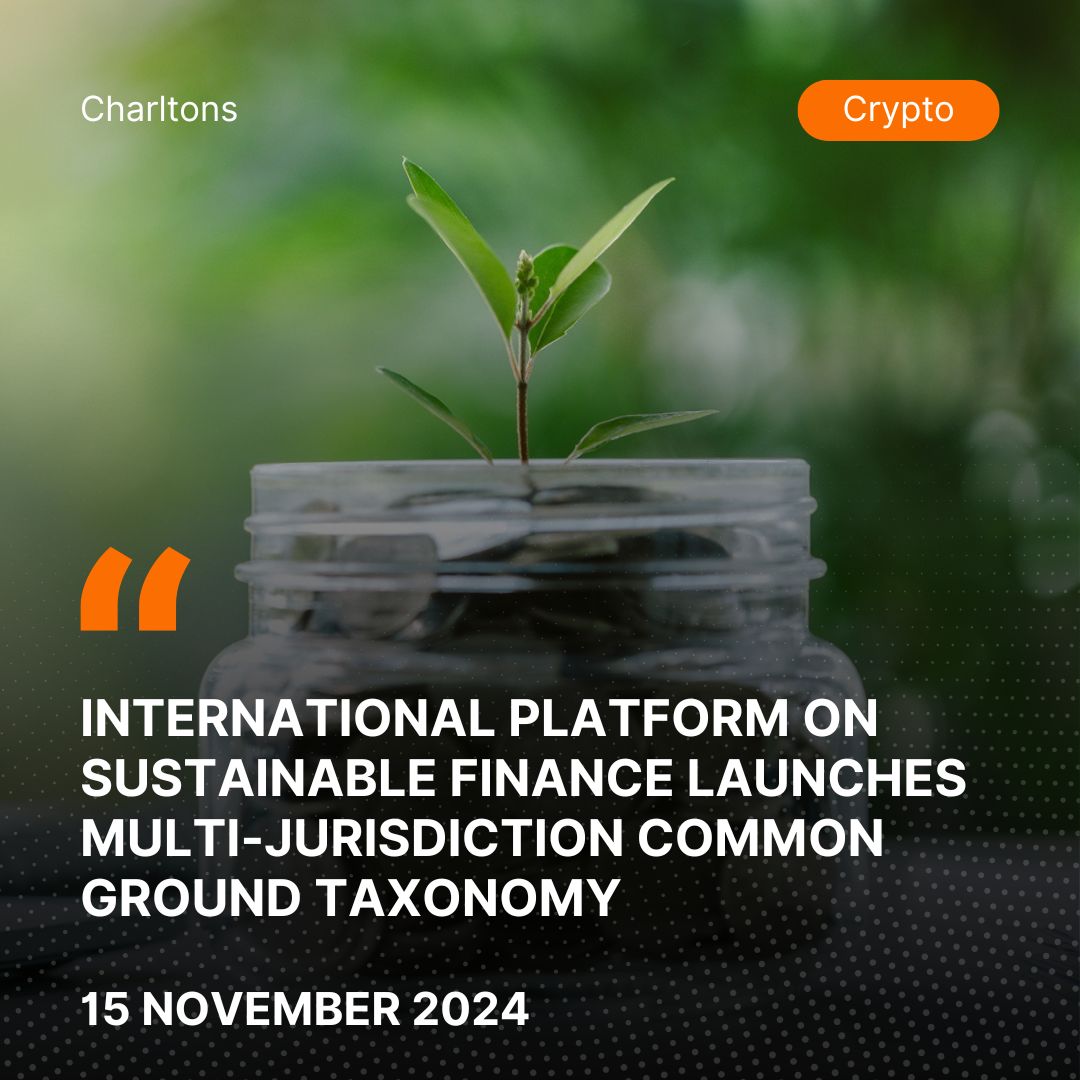
On 14 November 2024, the International Platform on Sustainable Finance, in collaboration with the People’s Bank of China, the European Commission Directorate-General for Financial Stability, Financial Services and Capital Markets Union, and the Monetary Authority of Singapore, unveiled the Multi-Jurisdiction Common Ground Taxonomy (M-CGT). Presented during an event in Baku, Azerbaijan, the taxonomy aims to harmonise sustainable finance criteria across China, the European Union, and Singapore, enhancing global interoperability in green finance taxonomies.
The M-CGT builds upon the bilateral EU-China Common Ground Taxonomy (CGT), which was established in 2020 as a joint initiative of the European Commission and the People’s Bank of China. By incorporating the Singapore-Asia Taxonomy into this framework, the M-CGT expands the interoperability of taxonomies to include three major jurisdictions. Its purpose is to facilitate cross-border green financial flows by providing a unified technical reference for assessing green activities across these regions.
This taxonomy serves as a resource for a diverse group of stakeholders, including financial institutions, corporates, investors, and regulators. While the M-CGT is not legally binding, green bonds and funds aligned with its criteria are expected to enhance cross-border investments, subject to the regulatory requirements of individual jurisdictions.
The M-CGT serves several Use Cases, applications and purposes:
The taxonomy allows financial institutions and investors to determine activities considered green across the three jurisdictions. It aligns green finance instruments with the mapped taxonomies, making them accessible for cross-border investors.
The M-CGT is intended to serve as a guiding document for jurisdictions currently developing their green taxonomies. Its design accommodates the inclusion of additional jurisdictions, broadening the scope of global taxonomy interoperability over time.
Facilitation of Green Capital Flows, by harmonising definitions and metrics, the M-CGT reduces barriers to cross-border green investments, enabling greater capital mobilisation for sustainable projects, particularly in developing economies.
The scope of the M-CGT builds upon the earlier EU-China Common Ground Taxonomy, which previously covered 72 activities across seven sectors. The expanded M-CGT maps 110 activities across eight focus sectors, addressing the climate change mitigation objective. The methodology includes:
The M-CGT compares activities across the three jurisdictions’ taxonomies to identify commonalities and divergences. This analysis enables the inclusion of more activities, even when metrics differ.
For activities with interoperable metrics, such as lifecycle greenhouse gas emissions in the energy sector, the taxonomy adopts the most stringent threshold. This ensures that green finance instruments aligned with the M-CGT meet the highest standards of credibility.
In cases where taxonomies rely on local certification schemes or standards, the M-CGT identifies commonalities. Activities are considered aligned if they meet at least one jurisdiction’s criteria. Findings of taxonomies:
- Around 60% of activities mapped from the three taxonomies share stringent criteria, particularly in manufacturing, transportation, water, and waste sectors.
- Approximately 5% of activities, mainly in electricity generation and construction, have aligned criteria across the jurisdictions.
- For 33% of activities, criteria were not directly comparable, reflecting the role of local regulations and standards in sectors like agriculture, forestry, and construction.
Leaders from the participating jurisdictions emphasised the importance of the M-CGT in advancing sustainable finance and facilitating global green capital flows. Dr Ma Jun, Chairman of the Green Finance Committee of China Society for Finance and Banking, stated “M-CGT is an important new milestone for enhancing interoperability of taxonomies across jurisdictions. The market usage of the CGT in the past two years, including for labelling Chinese green bonds sold to international investors, has demonstrated its ability to reduce cross-border transaction costs and boosting green capital flows especially to developing economies. The fact that CGT has already been used by several jurisdictions as a building block for taxonomy development suggests that M-CGT will have a greater potential to help assist other countries in developing their sustainable finance markets.” Marcel Haag, Director at the European Commission’s Directorate-General for Financial Stability, stating “the M-CGT is yet another key contribution of the International Platform on Sustainable Finance to the efforts of enhancing comparability and interoperability of taxonomies across the world, fully in line with G20 Sustainable Finance Working Group Roadmap and Principles. It will provide a useful reference for other jurisdictions and market operators regarding some of the features and commonalities across the activities of the Singapore, China, and EU taxonomies that are covered in this exercise.” Gillian Tan, Assistant Managing Director at the Monetary Authority of Singapore put his views as, “The inclusion of the Singapore-Asia Taxonomy in the M-CGT is an important milestone in the International Platform on Sustainable Finance’s efforts to provide greater consistency and comparability of green activities’ criteria across different taxonomies. The M-CGT serves as a common baseline that market participants can refer to in defining green activities, enabling cross border financing in the markets that the respective taxonomies serve.”
The Multi-Jurisdiction Common Ground Taxonomy in sustainable finance, establishes a harmonised framework that supports cross-border green investments, by integrating taxonomies from China, the European Union, and Singapore, the M-CGT creates a shared reference for market participants while setting a precedent for future inclusion of other jurisdictions. M-CGT’s emphasis and farsightedness on comparability and interoperability will help in mobilising global capital for environmental objectives, contributing to the achievement of international climate goals.
(Source: https://finance.ec.europa.eu/document/download/e83394d0-daf1-487e-b1bf-922731767a10_en?filename=241113-common-ground-taxonomy-multi-jurisdiction-activity-tables_en.pdf, https://www.mas.gov.sg/news/media-releases/2024/multi-jurisdiction-common-ground-taxonomy)





